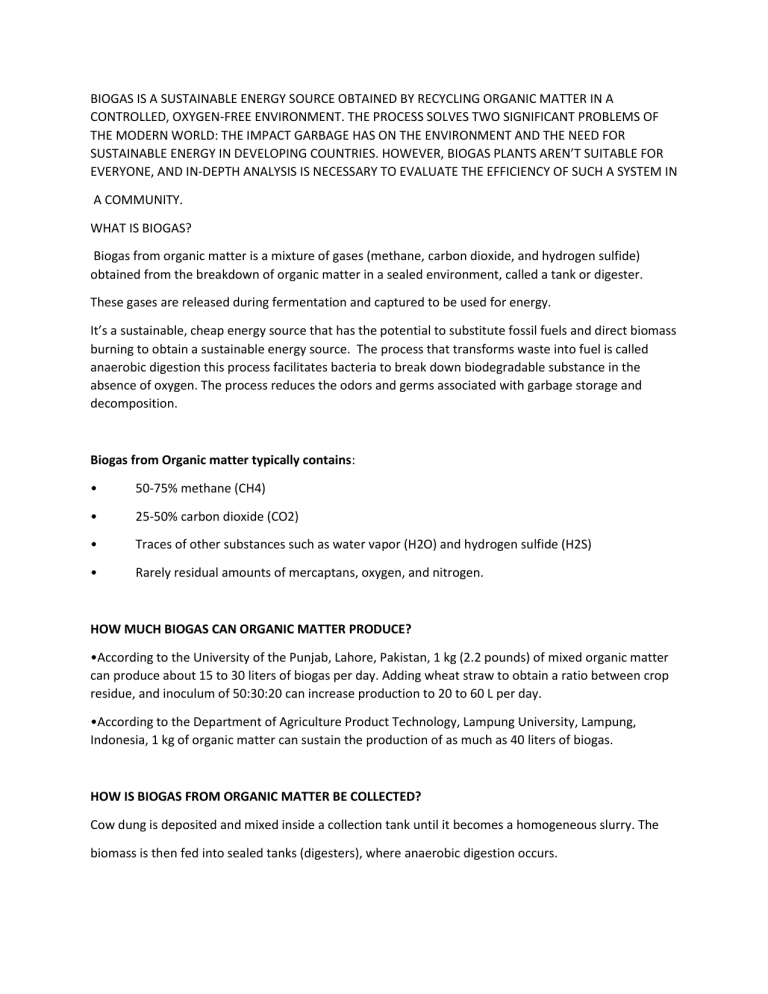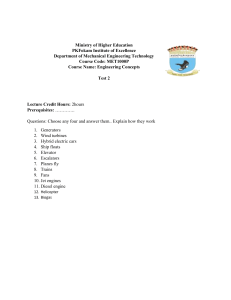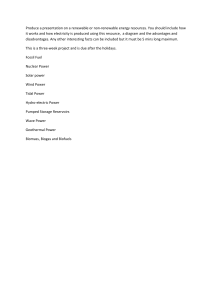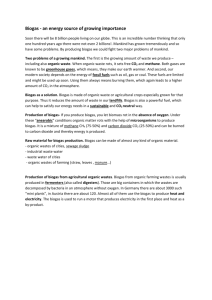
BIOGAS IS A SUSTAINABLE ENERGY SOURCE OBTAINED BY RECYCLING ORGANIC MATTER IN A CONTROLLED, OXYGEN-FREE ENVIRONMENT. THE PROCESS SOLVES TWO SIGNIFICANT PROBLEMS OF THE MODERN WORLD: THE IMPACT GARBAGE HAS ON THE ENVIRONMENT AND THE NEED FOR SUSTAINABLE ENERGY IN DEVELOPING COUNTRIES. HOWEVER, BIOGAS PLANTS AREN’T SUITABLE FOR EVERYONE, AND IN-DEPTH ANALYSIS IS NECESSARY TO EVALUATE THE EFFICIENCY OF SUCH A SYSTEM IN A COMMUNITY. WHAT IS BIOGAS? Biogas from organic matter is a mixture of gases (methane, carbon dioxide, and hydrogen sulfide) obtained from the breakdown of organic matter in a sealed environment, called a tank or digester. These gases are released during fermentation and captured to be used for energy. It’s a sustainable, cheap energy source that has the potential to substitute fossil fuels and direct biomass burning to obtain a sustainable energy source. The process that transforms waste into fuel is called anaerobic digestion this process facilitates bacteria to break down biodegradable substance in the absence of oxygen. The process reduces the odors and germs associated with garbage storage and decomposition. Biogas from Organic matter typically contains: • 50-75% methane (CH4) • 25-50% carbon dioxide (CO2) • Traces of other substances such as water vapor (H2O) and hydrogen sulfide (H2S) • Rarely residual amounts of mercaptans, oxygen, and nitrogen. HOW MUCH BIOGAS CAN ORGANIC MATTER PRODUCE? •According to the University of the Punjab, Lahore, Pakistan, 1 kg (2.2 pounds) of mixed organic matter can produce about 15 to 30 liters of biogas per day. Adding wheat straw to obtain a ratio between crop residue, and inoculum of 50:30:20 can increase production to 20 to 60 L per day. •According to the Department of Agriculture Product Technology, Lampung University, Lampung, Indonesia, 1 kg of organic matter can sustain the production of as much as 40 liters of biogas. HOW IS BIOGAS FROM ORGANIC MATTER BE COLLECTED? Cow dung is deposited and mixed inside a collection tank until it becomes a homogeneous slurry. The biomass is then fed into sealed tanks (digesters), where anaerobic digestion occurs. Microbes break down the organic matter inside the digester to obtain methane and other gases. In the final stage of the process, the gas can be purified (upgraded) by removing impurities and carbon dioxide. Fresh organic matter must be introduced to the digester regularly for best results. IS BIOGAS A TRULY SUSTAINABLE ENERGY SOURCE? Overall, turning cow dung into renewable energy makes sense environmentally and economically. A single cow produces 29.5 kg (65 pounds) of manure and between 250 and 500 liters of methane each day, turning massive cattle farming into a long-term risk for the environment. Garbage collected from organic matter that can’t be used to feed other animals or people, can impact the environment with significant amounts of methane emissions and presents a health risk if not adequately, managed. Processing this waste to obtain biogas and digestate is considered a sustainable waste management solution. Moreover, it provides cheap gas to communities in developing areas. However, generalization can be dangerous, as the profitability and sustainability of the process depend on the amount of waste a farm or a community needs to recycle and the existing infrastructure that makes biogas easy to use as cooking gas or for heating. • It’s an eco-friendly, renewable energy source that can reduce greenhouse gas emissions. • It reduces water and soil pollution, keeping cow dung from landfills. • It encourages a circular economy and gives access to clean energy in developing areas. Biogas disadvantages: • Costs of biogas production are high, between upfront expenses and system maintenance. • Biogas production can be time-consuming. • sites. Most systems require significant volumes of cow manure, which often arrives from multiple






